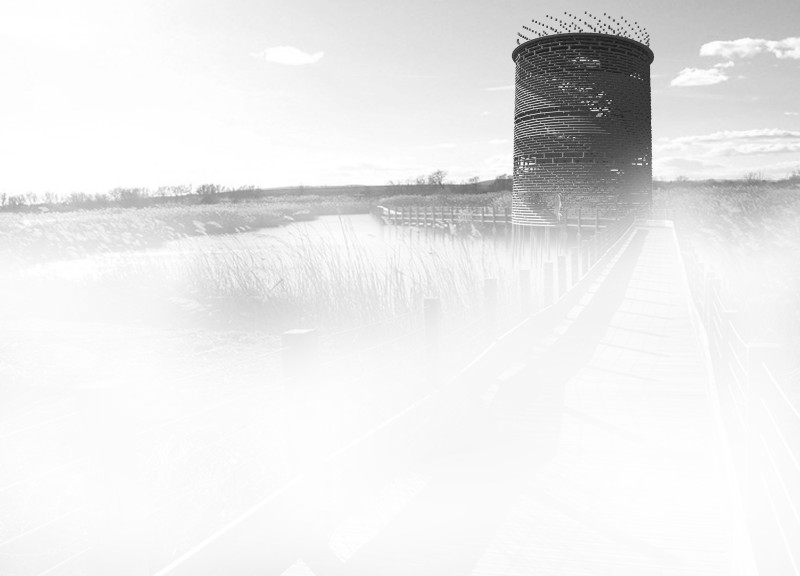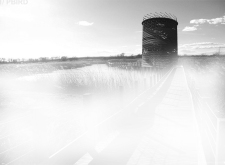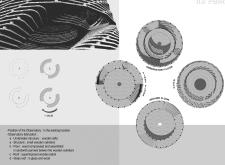5 key facts about this project
### Overview and Context
The Observatory Tower is situated in Grobina, Latvia, designed to provide an observational experience that engages with the region's natural landscape. The project aims to create a space for contemplation and exploration, allowing visitors to appreciate the scenic marshlands and expansive skies. Emphasizing a minimal environmental footprint, the design integrates seamlessly with its geographic context while fulfilling both functional and aesthetic purposes.
### Materiality and Structural Strategy
The primary construction material for the Observatory Tower is wood, chosen for its sustainability and aesthetic qualities. Central to the design are wooden cylinders, which form the main structure and create a visually dynamic façade that interacts with natural light and shadow throughout the day. The foundation utilizes timber piles to enhance stability and reduce ground impact. Wooden planks provide textured flooring throughout the observatory, while glass elements in the roof ensure unobstructed views of the surroundings. Compressed wood is also incorporated as both a visual and structural component.
### User Interaction and Environmental Integration
The observatory features aperture-like openings within the wooden cylinders that facilitate visitor engagement with the landscape, promoting active observation and interaction. Seating areas at various elevations encourage users to linger and immerse themselves in the environment. The design reflects natural forms, aligning with local flora such as grasses and reeds, which enhances the user's sensory experience. Natural light is maximized through the tower's circular form and the strategic arrangement of wooden elements, creating a welcoming atmosphere inside. Overall, the Observatory Tower serves not only as a viewing platform but also as a community space that fosters environmental education and appreciation.






















































